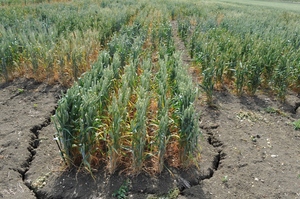 The cause of the weather pattern known as El Nino has been forming in the middle and eastern parts of the equatorial Pacific Ocean where the temperature of the surface layers is significantly higher than normal. It will have a large impact on weather patterns across the globe, particularly at the end of the year and in the first few months of 2016. However, the impact of each El Nino is different because of other factors that influence our weather. For instance, of the 26 recorded El Ninos, 17 have caused drought in Australia but on some occasions, it has been associated with very wet weather in that country.
The cause of the weather pattern known as El Nino has been forming in the middle and eastern parts of the equatorial Pacific Ocean where the temperature of the surface layers is significantly higher than normal. It will have a large impact on weather patterns across the globe, particularly at the end of the year and in the first few months of 2016. However, the impact of each El Nino is different because of other factors that influence our weather. For instance, of the 26 recorded El Ninos, 17 have caused drought in Australia but on some occasions, it has been associated with very wet weather in that country.
El Nino years have also been associated with increased rainfall in parts of South America, less rainfall in India, less hurricane activity in the Atlantic but more typhoons in the Sea of Japan. Closer to home, they have been associated with colder winters in Northern Europe. The El Nino in 2009 is said to have been a cause of the very cold weather in the UK at the end of that year and in the spring of 2010.
The way it is formed explains why it occurs in a cycle of at least two years. Currents normally bring cold water to the surface layers of the equatorial Pacific Ocean, a process called ‘upwelling’. In years when the winds are weak, less cold water is brought to these surface layers and consequently they warm, causing an El Nino. There is then a ‘feedback loop’ of at least two years because the warmer surface layers of the Pacific cause increased wind speeds that bring more cold water to the surface layers. The cooling phase lasts far longer than the warming phase. See the excellent Met. Office video on the causes of El Nino (https://www.youtube.com/watch?v=WPA-KpldDVc).
There have been studies on the impact of El Ninos on global food production, notably the Nature Communication “Impacts of El Niño Southern Oscillation on the global yields of major crops” (http://www.nature.com/ncomms/2014/140515/ncomms4712/full/ncomms4712.html).
Overall, the results of the study suggest that El Niño improves the global mean soybean yield by 2.1—5.4% but appear to change the global yields of maize, rice and wheat by −4.3 to +0.8%. The authors conclude that the results of their studies can lead to farmers adapting crop choice and management in order to minimise the impact of El Ninos. This is brave stuff bearing in mind that no two El Nino events are ever the same.
El Nino is also known as the Southern Oscillation. There is a North Atlantic Oscillation that is unlike El Nino because it is a largely atmospheric phenomenon rather than based on sea temperatures. It contributes to weather fluctuations in the North Atlantic and surrounding humid climates, such as the UK. However, it does not have the global impact of El Nino.
A few weeks back I attended a lecture on El Nino in the Department of Mathematics at the University of Cambridge. The lecturer, who was from the department but also worked for the Met. Office, was very ‘kind’ to the audience as he explained the mathematical basis of El Nino in simple terms. While he was not a modelling zealot, he did outline a simple model to illustrate the phenomenon. This explained why the Atlantic and Indian Oceans’ water temperatures had little effect on global climates. El Nino is far more influential because of the size of the equatorial Pacific.
So what can UK farmers do to reduce the impact of El Nino? Higher soya yields possibly mean lower oilseed rape prices and early drilling of wheat is likely to be more appropriate should next winter’s weather be cooler than average. But do not count on it!
